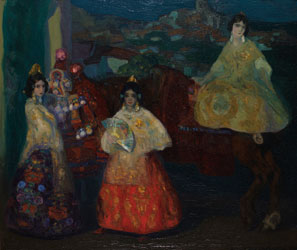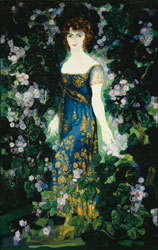- 01. Evocation of the nude
- 02. Paris nocturnes
- 03. Portraits
- 04. The splendour of women
- 05. A passion for dance
Anglada-Camarasa.
Arabesque and Seduction
6 November 2012 - 31 March 2013
Málaga, 2012 © Archivo fotográfico
del Museo de Bellas Artes de Bilbao
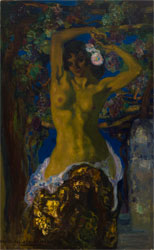
Preparatory Drawing for “Nude under the Vine Trellis”
c. 1909 Pencil and charcoal on paper,104.5 x 70.5 cm Colección Anglada-Camarasa Fundación "la Caixa" © David Bonet_2012
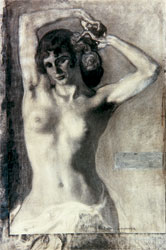
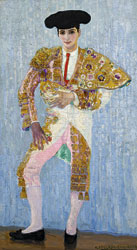
Portrait of Marianne Willumsen
c. 1911 Oil on canvas, 109.5 x 207 cm Colección Anglada-Camarasa Fundación "la Caixa" © David Bonet_2012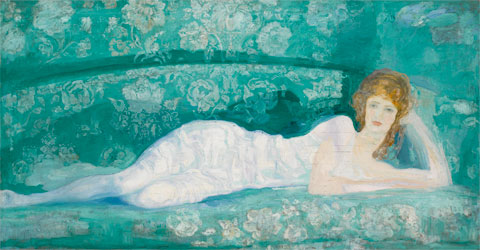
The splendour of women
In 1904 Anglada-Camarasa made a trip to Valencia that resulted in a change of direction in his career. He abandoned Parisian night-time subjects and now focused on the picturesque folk culture of the Mediterranean, a shift of emphasis that marks the start of his second Parisian phase, which lasted until 1914 when he moved to Majorca.
He now focused on depictions of folkloric female types in large-format works of dazzling colour and notably decorative effect, resulting in backgrounds of a distinctive texture against which the female figures are located. The overall result is an explosion of colour and sensuality. Continuing with this more decorative approach, Anglada-Camarasa painted other more elegant, static women that look directly out at the viewer, their forms created from flat planes of colour.
Works of this type allowed him to focus on their beautiful, decorative costumes and resulted in much more complex and also more unsettling compositions. Anglada-Camarasa’s move to Majorca in 1914 (the year that marked the start of his first Majorcan phase, which lasted until 1936) saw another change of direction in his art.
He began to paint new female archetypes against backdrops of the Majorcan landscape that he so loved, or surrounded by flowers. The result was a series of highly imaginative images of women from the Spanish upper classes or from the world of culture in which the artist himself moved.

